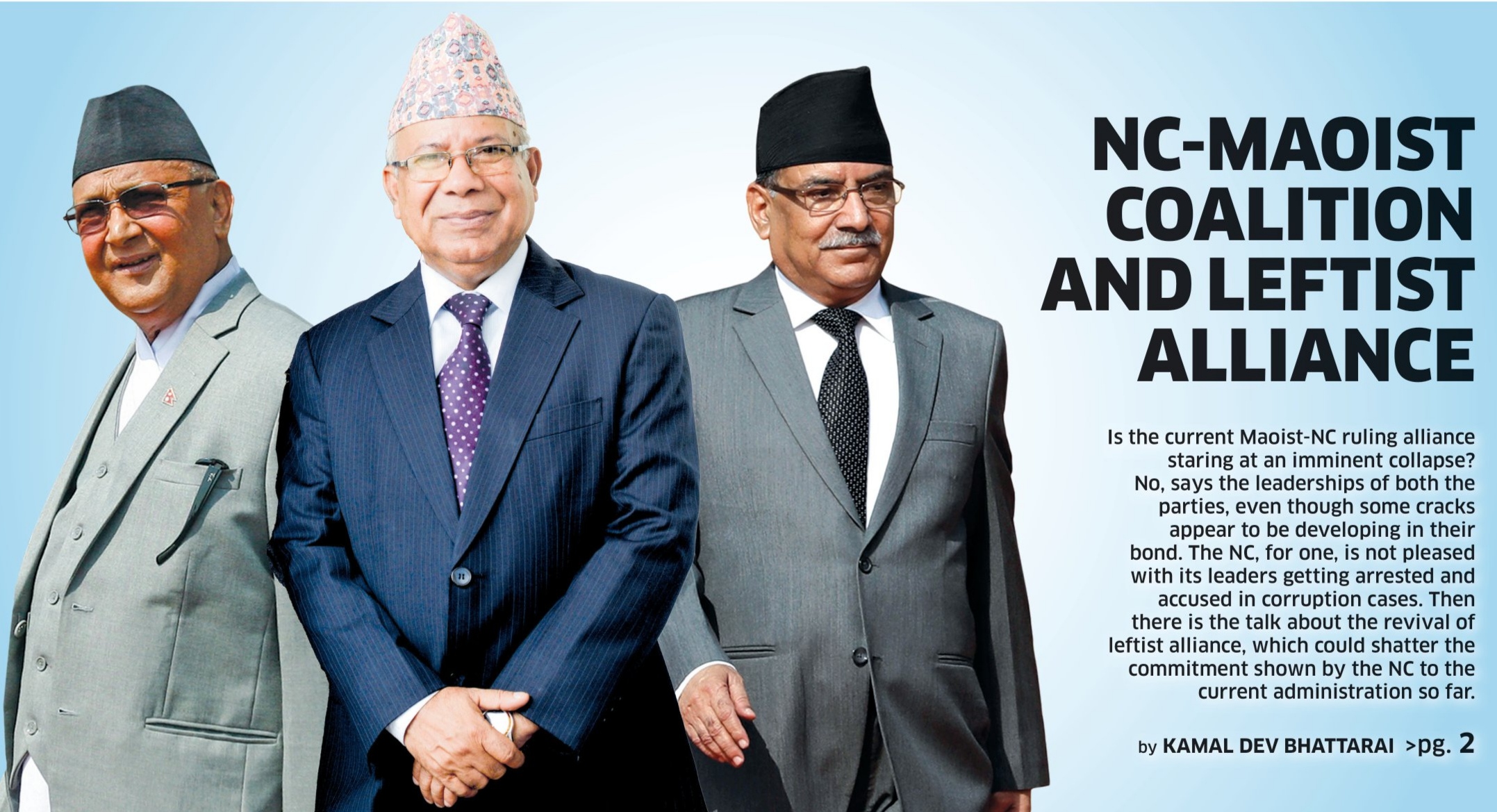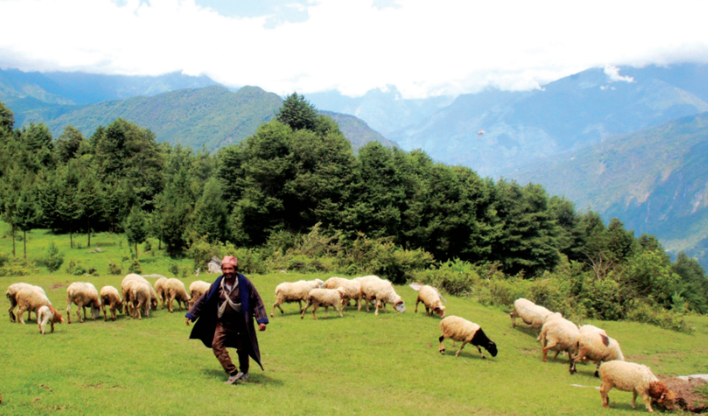MoHP urges people to wear masks in public places
The Ministry of Health and Population has appealed to all to wear face masks while in public places. The latest request from the Ministry comes after the infection of a new variant of coronavirus BF-7 is reported to be increasing in the neighboring countries. The Ministry has also requested all to follow the health protocol including maintaining physical distance and washing hands properly. Issuing a statement, MoHP Spokesperson Dr Sanjay Kumar Thakur has urged all to follow health protocol including wearing masks in public places, maintaining physical distance, using sanitizers, washing hands regularly with soap and water. The statement also appeals to all concerned to complete their booster dose of COVID-19 vaccine. Meanwhile, for those celebrating New Year 2023 and the Christmas festival, the Ministry has urged people to avoid crowded places and observe the festivals with caution. Although the BF-7 variant has not yet been confirmed in Nepal, the risk remains high due to open borders and movement as it is increasing in neighbouring India and China, the statement said.
French serial killer Charles Sobhraj freed from Nepal prison
A French serial killer Charles Sobhraj has been freed from a prison in Nepal on Friday. Sobhraj, who had been doing time in the Kathmandu-based prison for the past 19 years for the murder of an American woman, Connie Jo Boronzich, 29, and his Canadian girlfriend Laurent Carrière, 26, in 1975, was freed on the ground of age following a directive of the Supreme Court. Responding to a habeas corpus writ, a division bench of Justices Sapana Pradhan Malla and Til Prasad Shrestha on Wednesday issued a verdict directing the government to free Sobhraj (78) at the earliest, saying that he has already completed 95 percent of his jail term. The government was also ordered to make arrangements to send him to his home country within 15 days. Following his release, he has been sent to the Department of Immigration today. Now, the Department will start the process to deport him to his country. But, Sobhraj has expressed his desire to stay in Nepal for some time. He was arrested on September 19, 2003. Sobhraj had previously spent 20 years in prison in India.
Financial literacy level still low: NRB survey
While the proliferation of banks and financial institutions (BFIs) has increased access to finance in Nepal, average Nepalis are still behind when it comes to financial literacy, according to a new Nepal Rastra Bank (NRB) survey. The NRB’s report titled ‘Baseline Survey on Financial Literacy in Nepal’ shows Nepal’s financial literacy score is 57.9 percent which is slightly lower than the average score of the OECD survey. This is the first survey carried out by the central bank to find out the financial literacy status in the country. “This is the first time that the central bank has carried out a survey of this kind in the country. The findings show the level of financial literacy in Nepal is low compared to other countries including India,” said Prakash Kumar Shrestha, Executive Director of NRB, adding, “The survey shows the status of financial literacy in the country and where the interventions required to improve financial literacy are.” The report shows provincial disparity exists in financial literacy scores. Bagmati Province and Gandaki Province have higher financial literacy scores compared to other provinces. Financial literacy among the male population is higher compared to the female population and it is relatively higher in the population residing in metropolitan cities compared to other local-level. According to the report, Bagmati Province stands at the top with a score of 64.5 percent, while Madhesh Province is at the bottom with a score of 52.0 percent. Province 1, Madhes, Lumbini, and Sudurpaschim provinces have financial literacy scores less than the national average. Interestingly, the financial literacy score of Karnali Province is slightly higher than the national average. “It is due to a comparatively higher score in financial behavior and financial attitude of the respondents,” says the report. In terms of gender, men have a better score than women. The report shows financial literacy scores for men and women at 61.8 percent and 54.8 percent, respectively. The gender gap in financial literacy score exists in all provinces, with much a wider gap in Madhesh and Sudurpaschim provinces. Financial literacy differs with age, education, income level, and occupational differences. Young people have a high financial literacy score compared to people of higher age groups. Those with formal education, are employed in the formal sector, and have a higher skill and income level have better financial literacy scores. The adult population employed in the agriculture and construction sectors has a very low level of financial literacy scores. The financial literacy score of the top income group is 68.4 percent compared to just 50.7 percent in the lowest income group. Similarly, salaries/wage employees and self-employed have higher financial literacy scores of 64.2 percent and 63.6 percent respectively, compared to that of housewives (51.2 percent) and unemployed (47.2 percent). "People involved in the formal sector have a higher financial literacy score compared to those involved in the informal sector," reads the report. The higher score in the younger generation and increasing adult literacy rate, according to the report, shows a better prospect for financial literacy and increasing demand for financial services in the days to come. The central bank study finds a financial knowledge score of 47.3 percent at the national level. Of the seven basic concepts within financial knowledge, the survey has found that the concept of division and interest is relatively well understood by the respondents. However, assessing the impact of inflation and interest on purchasing power, simple and compound interest calculation, the relation between risk and return, and the impact of diversification on risk are relatively less-known subjects among Nepalis, according to the report. Given the relatively low score, the report suggests there is a big scope to improve financial literacy by targeting specific places, gender, and groups. “The female population and Madhesh Province need special intervention for increasing financial knowledge, though other Provinces also need similar types of intervention,” says the report. Since the usage of payment, saving, insurance, and credit is still lower in rural areas and especially in the female population, unemployed people, housewives, and unskilled people, the report says efforts on broadening financial literacy and availability of products should be made targeting these groups. The survey finds that 73.78 percent of adult populations use payment products such as mobile banking, internet banking, credit card/debit card, saving and current account, and digital wallets. Bagmati (85.62 percent) and Gandaki Province (84.88 percent) have the highest proportion of the adult population using payment products. The young generation has a higher usage of payment products than elderly people. About 79.84 percent people aged 18 to 30 years use payment products compared to 68.82 percent of people of 60 years and above. Anil Kumar Upadhyay, CEO of the Agriculture Development Bank said that the survey has given a detailed picture of the gap in financial literacy. “Since it has carried out a detailed gap analysis, it will help us to focus our efforts in the coming days,” said Upadhyay. Financial literacy in Nepal
- Nepal’s financial literacy score is 57.9 percent.
- Bagmati Province and Gandaki Province have higher financial literacy scores compared to other provinces.
- Madhes Province scores the lowest in financial literacy score.
- The financial literacy score of men is higher than women by 7.5 percentage points.
- About 73.78 percent of adults use the payment product, 86.64 percent use saving, investment, and retirement products, 46.34 percent use credit products and 30.2 percent use insurance products.
- About 66.97 percent of adult populations are aware of at least 5 financial products.
- About 71.83 percent of the population rely on family and friends for saving or borrowing to meet their financial needs.
- Bagmati Province has the highest usage of payment products.
- Karnali Province has the lowest usage of bank loans.
Merger between life insurance companies begins
For the first time in the Nepali life insurance sector, two life insurance companies—Surya Life Insurance and Jyoti Life Insurance—have completed their merger and started integrated business on Thursday. The new entity formed after the merger has been named Suryajyoti Life Insurance Company. Surya Life and Jyoti Life decided to go for a union after Nepal Insurance Authority increased the paid-up capital for life insurance companies to Rs 5bn and non-life insurance to Rs 2bn. The two companies had signed a memorandum of understanding (MoU) for the merger in the last week of June. Post-merger, Suryajyoti will have paid up capital of Rs 4.54bn. This is the first merger among the life insurance companies in the country. While other life insurance companies have also signed merger agreements, they are yet to complete the merger process. There have been two successful mergers in the non-life insurance business. In July, Himalayan General Insurance and Everest Insurance merged to form Himalayan Everest Insurance Insurance Co. Ltd. Similarly, in October, Sanima General Insurance and General Insurance Company merged to form Sanima GIC Insurance Ltd.



















